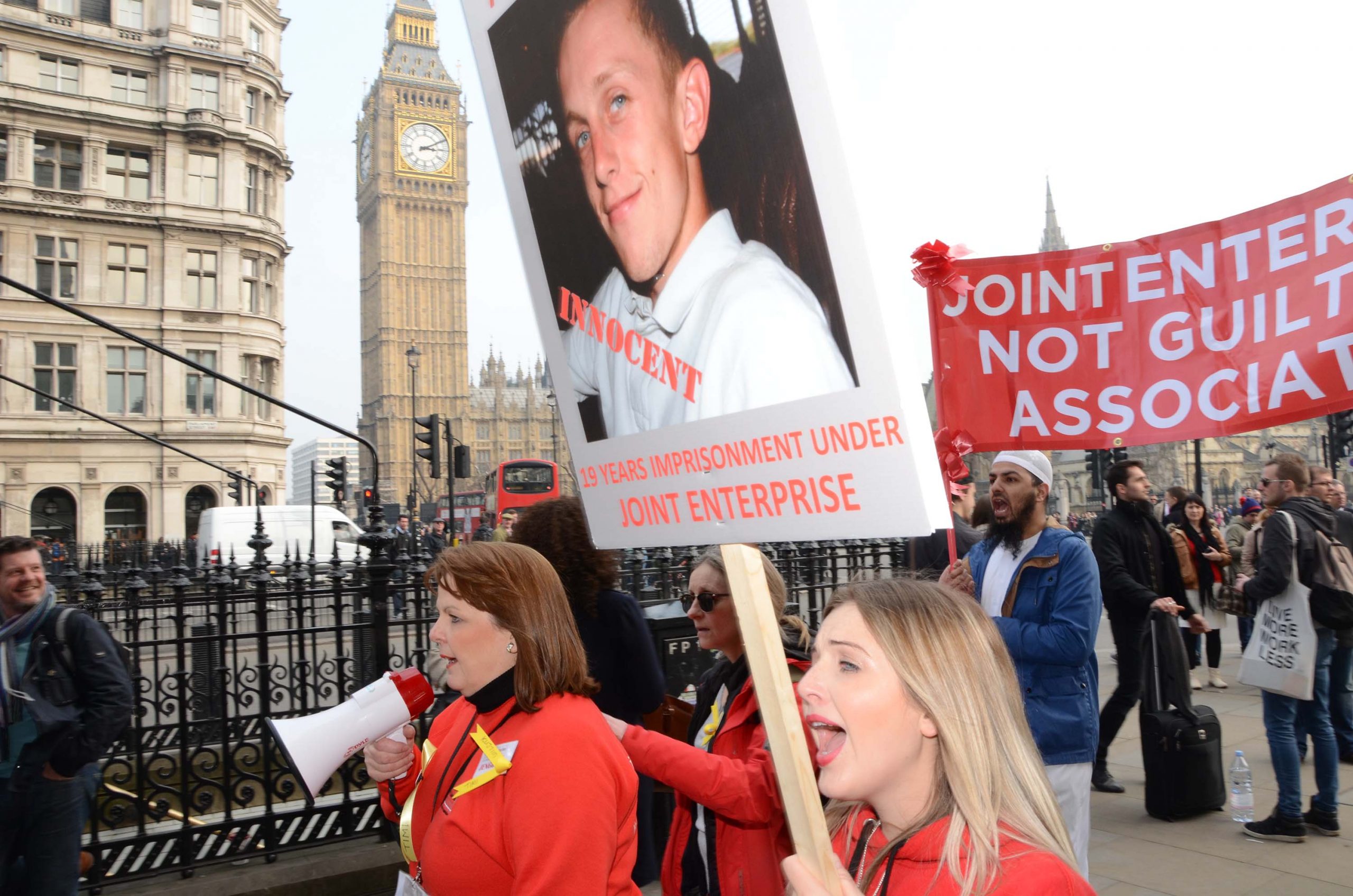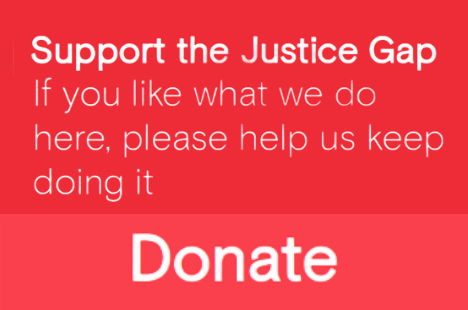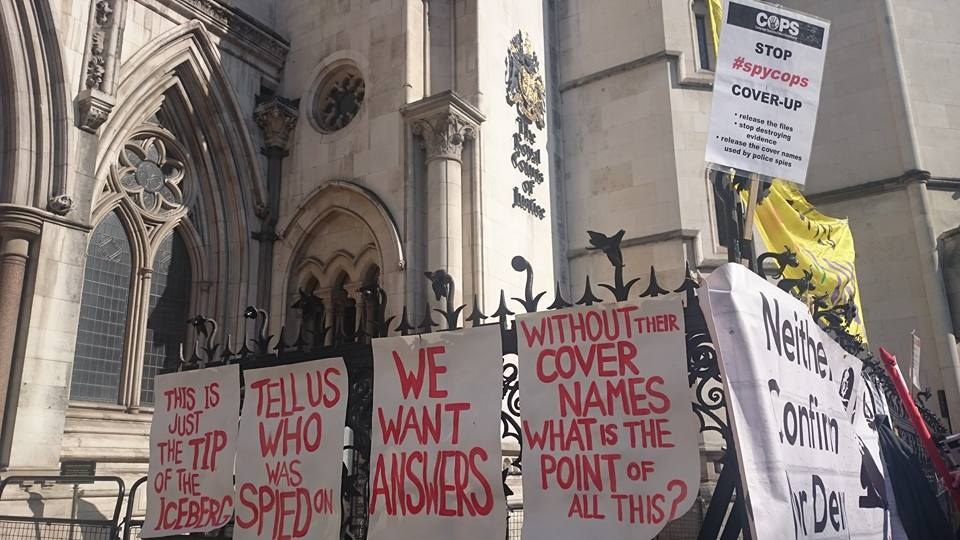The first national monitoring scheme for joint enterprise cases has revealed that last year almost six out of 10 defendants were under 25 years and one in five under 18. Four cases involved children between the ages of ten and 13 years.
The Crown Prosecution Service (CPS) launched its national joint enterprise monitoring scheme after years of criticism as well as legal actions over the absence of data in the context of well founded concerns about its racial disproportionality. Earlier this week it produced a report on the first 12 months of data (here) which recorded 168 joint enterprise cases of homicide and attempted homicide within the 2024/25 financial year with a total of 511 defendants. London had 49 of those cases and 158 defendants.
More than a third of defendants were from Black and minority ethnic backgrounds, 25% Black and 10% Asian. The figures also demonstrate massive geographically disproportionality. The largest category of ethnicity across the dataset for defendants is white (36%) – but in London, less than one in 10 of defendants were white. Black defendants make up a quarter of the data caseload despite representing 4% of the general population – by contrast, white defendants are 36% of the caseload and 92% of the population.
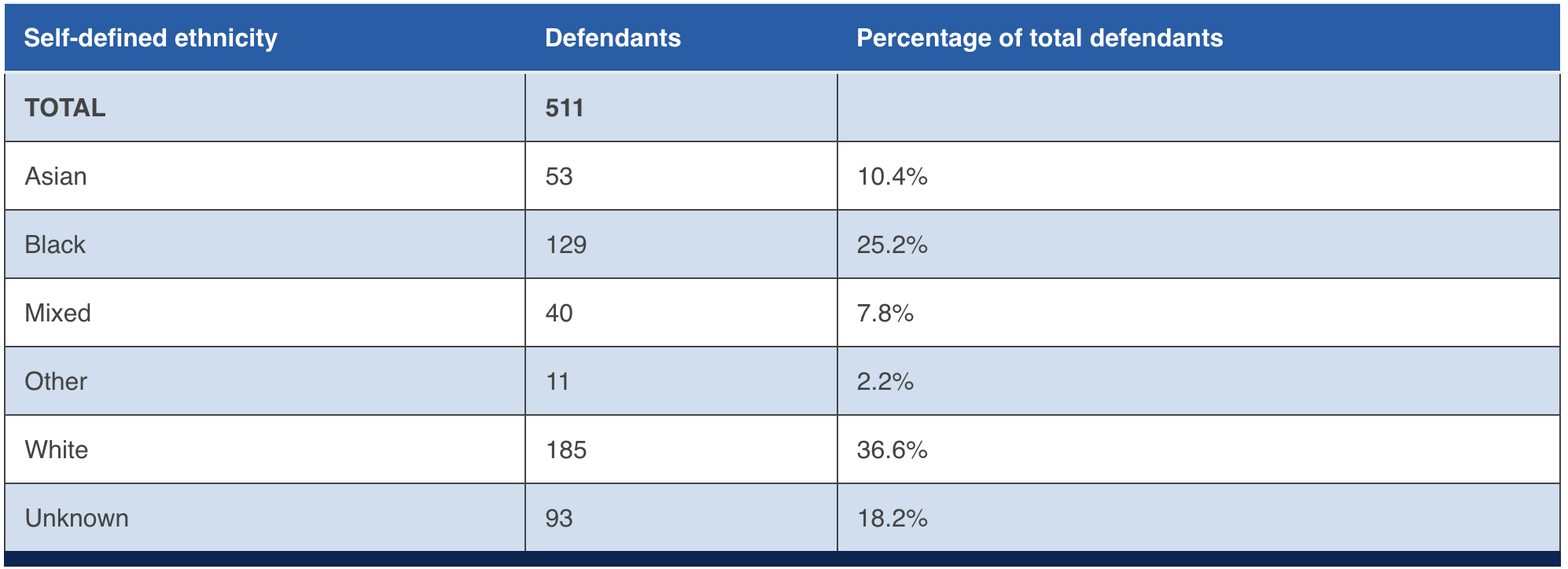 In the new publication, the CPS makes the hollow boast that joint enterprise homicide prosecutions are ‘now among the most rigorously monitored case types in the CPS’. The House of Commons’ Justice Committee twice called upon the courts to monitor joint enterprise. As we reported on as far back as far back as 2012, MPs had been shocked to discover the number of people charged as secondary participants was unknown meaning it was, in their words, ‘difficult to judge whether any, or all, of the criticisms on the use of joint enterprise that we heard from several witnesses are well-founded’. ‘We look forward to studying the data as soon as it is available,’ the committee added. A similar call was made by the Justice Committee in 2015.
In the new publication, the CPS makes the hollow boast that joint enterprise homicide prosecutions are ‘now among the most rigorously monitored case types in the CPS’. The House of Commons’ Justice Committee twice called upon the courts to monitor joint enterprise. As we reported on as far back as far back as 2012, MPs had been shocked to discover the number of people charged as secondary participants was unknown meaning it was, in their words, ‘difficult to judge whether any, or all, of the criticisms on the use of joint enterprise that we heard from several witnesses are well-founded’. ‘We look forward to studying the data as soon as it is available,’ the committee added. A similar call was made by the Justice Committee in 2015.
Back in 2023 a pilot study revealed that Black people were 16 times more likely to be charged under the doctrine than white, see here. That pilot only came after the threat of legal action by JENGbA and Liberty. 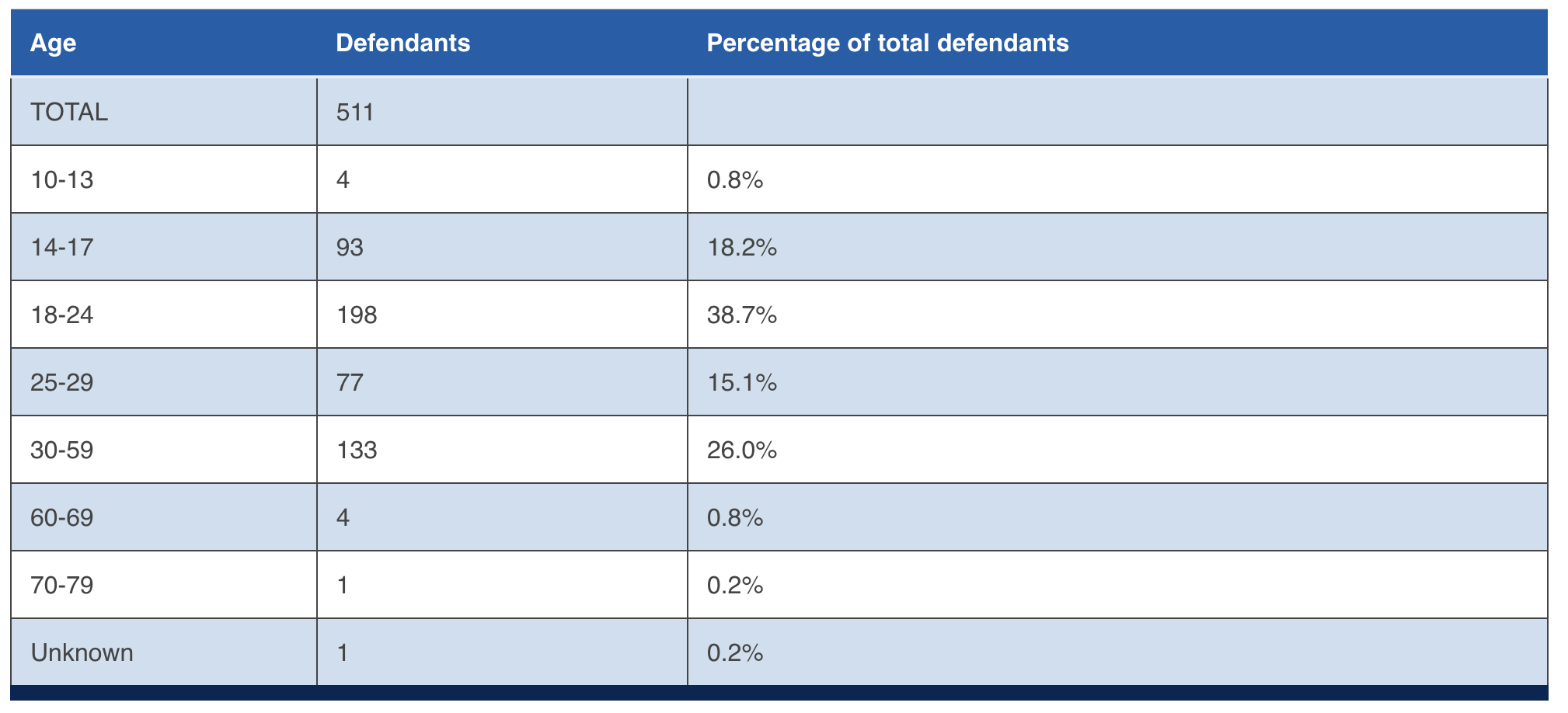 Gloria Morrison, co-founder of JENGbA says the latest data ‘just proves what we’ve been saying all along. JE gives people life sentences for crimes they did not commit.’
Gloria Morrison, co-founder of JENGbA says the latest data ‘just proves what we’ve been saying all along. JE gives people life sentences for crimes they did not commit.’
‘We remain the last place in Europe that hands out life sentences to children and it’s horrific to see 19% of the suspects charged from 168 case were children, with four of them under the age of 13,’ Morrison told the Justice Gap. ‘The CPS continues to target children and can’t explain the disproportionately. When it comes to joint enterprise David Lammy said explain or reform, well the CPS and judiciary can’t do either – so it’s time to abolish.’
The CPS now says that given ‘the complexity and seriousness of these cases and the severity of the consequences’, it was important that the CPS ‘monitors the nature of its caseload and transparently reports on these prosecutions’. To that end, it has implemented a scheme whereby cases are automatically flagged through the CPS’s case management system. In addition to this ‘system-generated’ data, there is also ‘richer’ manually created data set recording, for example, whether any mental health issues were identified and information relating to potential ‘gang’ evidence in the case.
Of the 168 cases, the prosecution relied on evidence of alleged ‘gang’-related offending in 21 (12.5%) and over half of these were in London. However report acknowledges problems with the description and that the definition of ‘gang’ can ‘vary amongst different agencies’. The report states: ‘It was also recognised that use of the term ‘gang’ to describe a group of black children, in the absence of any evidence to suggest that they are involved in a ‘gang’, invokes a racial stereotype which may be racially discriminatory.’
It continued by saying that this was noted as a particular issue in the context of joint enterprise homicide ‘where misconceptions around ‘gang’ association may lead to assumptions regarding the involvement and motivation of an individual implicated in a group-based offence’. The CPS has reviewed its guidance on ‘gang’-related offending alongside the monitoring scheme and will now publicly consult on this guidance to give clarity to practitioners on these issues.
Under the monitoring scheme, homicide and attempted homicide cases will be flagged on the case management system and subjected to a case management panel after a charging decision has been made typically chaired by the deputy chief or chief Crown prosecutor. The scheme will draw on two kinds of data: system generated data and manually created data. The latter recorded the 168 cases mentioned above and is described as a richer set of data. That includes whether any mental health issues were identified; information relating to potential gang evidence in the case; as well as ethnicity and sex.
According to the ‘system-generated’ data in the last year there were 449 completed joint prosecutions leading to 366 convictions – of the 366, 211 defendants were convicted after a trial and 155 entered guilty pleas.
